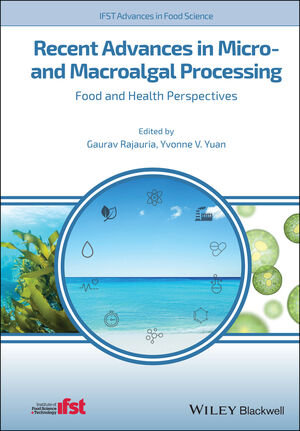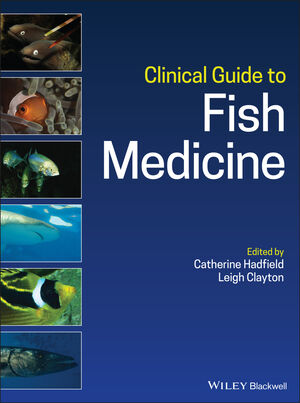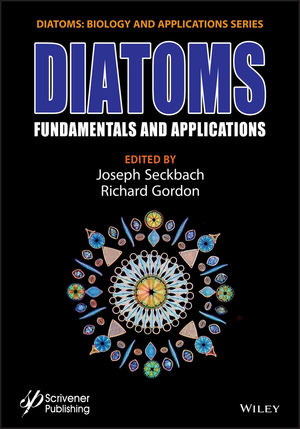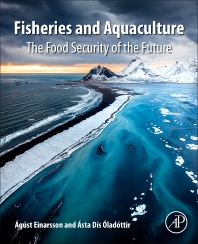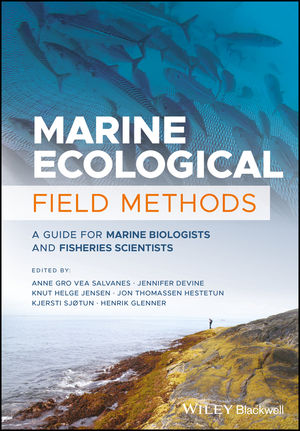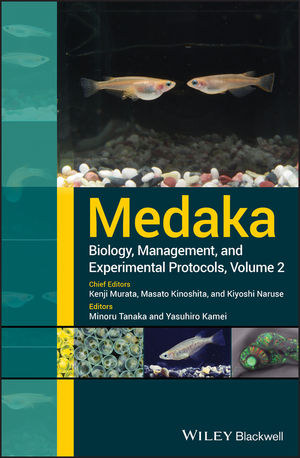
Features
Nutrition & Feed products
Feed for Thought: To leach or not to leach
Understanding the science for minimal nutrient leaching from aquafeed
March 14, 2025 By Magida Tabbara
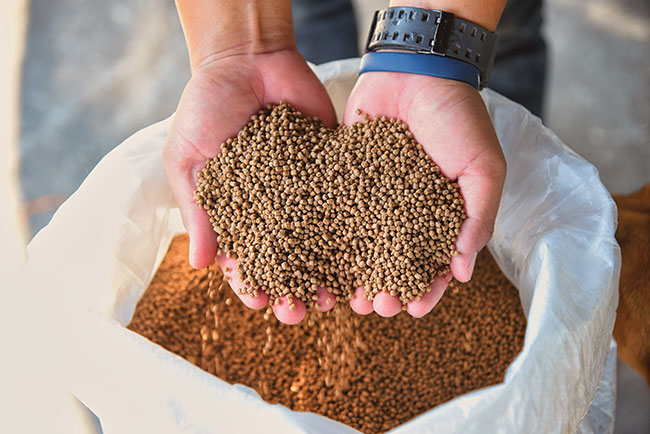 Farmers must weight the advantages of saving in feed production costs at the expense of fish yield. Photo: TL23 photo / Adobe stock
Farmers must weight the advantages of saving in feed production costs at the expense of fish yield. Photo: TL23 photo / Adobe stock Advances in research allowed for the optimization of the dietary requirements of a lot of commercially important cultured species, but a lot is still unknown and open for scientific investigation. But whenever we think about aquafeed, we tend to concentrate on the nutritional needs of the fish, overlooking the importance of good quality pellets for fish performance.
Technological advancements allowed feed manufacturing companies to delicately produce feed pellets of the desired size (length and diameter), with consistent cut and desired floatability or sink velocity.
However, in a lot of small-scale operations with limited resources, we notice that farmers still rely on “homemade” feed that does not necessarily meet the quality requirements to deliver those nutrients to the animals.
Bearing that in mind, farmers must weigh the advantages of saving in feed production costs at the expense of the fish yield at the end of the production season.
Background
Feed manufacture relies on the process of extrusion for high-quality feed pellet production. The process is based on using high temperatures and pressures to result in floating feed pellets that are stable in the water column.
The use of extrusion for feed production is multifaceted. It not only increases pellet durability and stability in water, but also improves the nutritional quality of the feed itself. Nowadays, a lot of feed is formulated to include more plant proteins from cereals or legumes. Such proteins are nutritious but include certain anti-nutritional factors or plant cell components that decrease the animals’ ability to digest them.
Luckily, extrusion helps to solve a lot of these problems. The application of high temperatures during feed manufacture helps to destroy a lot of the anti-nutritional factors and improves ingredient digestibility. However, extruding diets does not completely mitigate the leaching problem caused by poor quality pellets.
Feed manufacture
When producing feed, we need to account for handling and transportation at the end of the production chain and how that would affect nutrient delivery to the animals. If not extruded properly, consumers would end up with bags filled with dust and fine particles. Such undesired by-products constitute financial losses, especially since they can’t be fed to the animals. If that feed ends up being used, especially in dynamic culture systems such as open net pens, water movement will further deteriorate the pellets, and a lot of the nutrients will be lost. In other words, farmers would be letting their money go with the flow.
Standardized methods for determining the physical properties of aquafeed are yet to be established. Accordingly, a lot of common sense must be applied when formulating and manufacturing the feed to result in minimal losses. With the need to incorporate sustainable and cost-effective feed ingredients, we need to bear in mind that certain protein sources play a role in improving pellet durability.
For instance, incorporation of camelina meal in the diet can seem appealing and more cost effective. But when investigated up close, we realize that incorporating soybean products can be more advantageous despite being a bit more costly. Isolated soy protein is a modified soybean product that when used, can help improve pellet durability.
Upon extrusion at high temperatures, protein to protein interactions take place, resulting in stronger bonds and more durable pellets. Despite it being a bit more costly than other plant protein sources, incorporation of isolated soy protein can be beneficial as it results in nutrient-dense and water-stable feed pellets.
Optimized management
Additionally, feed manufacture needs to come hand-in-hand with proper feed management. According to the literature, there seems to be a strong correlation between feed composition (in terms of protein density), leaching in form of total ammonia nitrogen, and the size of the feed pellets. According to a study by Piedecausa et al. (2010), the feed pellet size greatly influences its sinking velocity, especially if not properly extruded to float for long.
Protein composition, on the other hand, mostly affects how much ammonia will leach out, especially if prolonged for a long period of time. If feeding salmon in open nets where water movement will greatly impact feed quality in the water, we need to bear that in mind. A lot of salmon feed is formulated to contain high levels of protein.
Therefore, feed should be properly and timely administered to minimize stay in water, allowing the fish to benefit from most of the nutrients before leaching takes place. Careful feeding strategies should be followed, especially when feeding fish at younger age categories that require feed with even higher protein content.
Water-soluble
Another consideration to bear in mind is the unavoidable possibility of water-soluble nutrients leaching out. Water-soluble nutrients, such as vitamins or amino acids, can easily leach out of the feed, especially when it stays in the water column for prolonged periods.
Research has shown that vitamin leaching can result in up to three per cent financial loss from feed cost, but almost all of the biological benefits from adding them is lost. Luckily, mitigating such a problem is not only easy but also very reasonable and affordable.
According to the literature, incorporating up to six per cent of soybean oil in the feed formulation can help decrease leaching of such ingredients to less than 10 per cent. Such addition is beneficial in a multitude of ways. It not only alleviates the leaching problem, but also helps contribute to decreasing the expenses associated with feed composition.
Despite needing fish oil for its Omega-3 fatty acids, especially in salmonids and marine organisms, we can achieve the animals requirements by combining fish oil and soybean oil. Such a combination helps decrease production expenses, helps in alleviating leaching and extends the shelf life of the feed through avoiding excess use of an expensive product that can oxidize quickly.
Feed for thought
Nutrient leaching from aquafeed is a problem with applicable solutions. Proper feed manufacture, along with good feeding management can help farmers make the best out of the feed they paid for. Sometimes we tend to think that the traditional and costly ingredients are the only way for us to get good quality feed. We need to remember that with some common sense, basic science, and keeping sustainability in mind, alternative ingredients can greatly help us. Our environment functions in a circular cycle. By choosing the adequate alternative ingredients, our new aquafeed will help the fish grow while decreasing the waste and discharges and conserving the environment.
References
- Čolović, R., Banjac, V., Kokić, B., Lević, J., Đuragić, O., Spasevski, N., & Sredanović, S. (2014). A simple method for determination of relative leaching losses of water soluble components of fish feed. Aquaculture, 2014.
- Delgado, E., & Reyes-Jaquez, D. (2018). Extruded aquaculture feed: a review. Extrusion of metals, polymers and food products. InTechOpen, London, 145-163.
- Khater, E. S. G., Bahnasawy, A. H., & Ali, S. A. (2014). Physical and mechanical properties of fish feed pellets.
- Piedecausa, M. A., Aguado‐Giménez, F., García‐García, B., & Telfer, T. C. (2010). Total ammonia nitrogen leaching from feed pellets used in salmon aquaculture. Journal of Applied Ichthyology, 26(1), 16-20.
- Smith, I. P., Metcalfe, N. B., & Huntingford, F. A. (1995). The effects of food pellet dimensions on feeding responses by Atlantic salmon (Salmo salar L.) in a marine net pen. Aquaculture, 130(2-3), 167-175.
- Zettl, S., Cree, D., Soleimani, M., & Tabil, L. (2019). Mechanical properties of aquaculture feed pellets using plant-based proteins. Cogent Food & Agriculture, 5(1), 1656917.
Magida Tabbara is a PhD candidate in Aquaculture at Auburn University with an emphasis on aquatic animal nutrition. She has over five years of experience in aquatic nutrition, feed formulations and feed manufacture, in addition to experience in scientific writing, technical writing, and journalism.
Print this page
